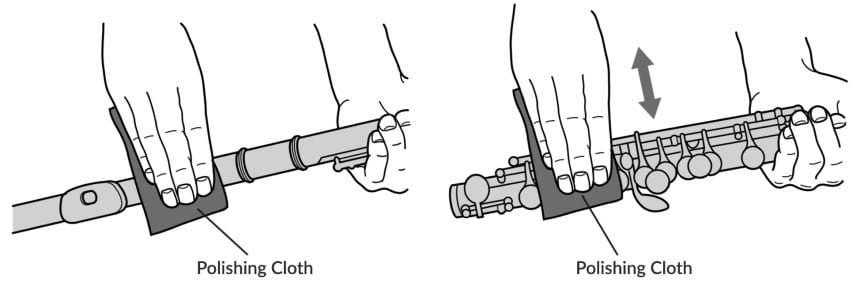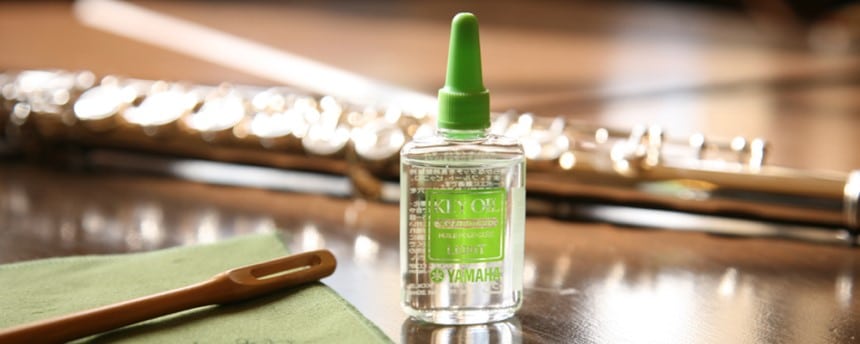A flute is a woodwind musical instrument that produces sounds through the passage of air through its body. If you needed an indicator that a flute was meant to be regularly cleaned, the fact that it comes with a cleaning rod upon purchase should be enough. Responsible use of any instrument, even the best flutes, cannot be complete without regular cleaning and maintenance. If, for some reason, you haven’t taken the time to learn how to clean a flute, this is for you.
However, before I continue my guide on how best to clean a flute Trusted Source BBC - Play It Again You don’t have to be a musical genius to learn to play or sing – it doesn’t matter what age you start at, or how good (or bad) you think you are, everyone is musical to some extent and anyone can have fun making music. www.bbc.co.uk , I should point out that a cleaning rod is not the only took needed. A silver cloth and a gauze cloth would also come in handy.
Also, the flute has three main parts, and these parts would need to be carefully unscrewed and separated from one another to ensure better access to their insides. These parts are:
Step 1: Pass the gauze cloth through the eye of the cleaning rod, just like when threading a needle. Put the cloth over the rod and wrap it around it completely. Once this is done, the cloth-wrapped rod can be used to clean the insides of the flute. While it is advisable to start with the head joint, it is not compulsory, and care should be taken to force the rod in. If it doesn’t fit easily, try rewrapping or rewinding the cloth around it.
Step 2: Push the cleaning rod gently and slowly to the top of the head joint while applying a slight, twisting motion. Thus, twisting motion helps cover more of the inner surface and is a more efficient cleaning motion than the regular up and down movement.
Step 3: After cleaning the head joint, next up is the body of the flute. Push the cleaning rod, wrapped with the cloth gauze, up the flute’s body and apply the same twisting motion used in cleaning the head joint. However, this time, do not push the rod in but rather aim for the middle, and after cleaning the first half, turn the body around and insert the cleaning rod through the other opening to clean the second half using the same techniques.
 Step 4: In the spirit of keeping good habits, always clean the foot joint along with the rest of the flute regardless of how logical our objections to doing so might be. The same up and twist motion used in cleaning the head joint and body should also be utilized here.
Step 4: In the spirit of keeping good habits, always clean the foot joint along with the rest of the flute regardless of how logical our objections to doing so might be. The same up and twist motion used in cleaning the head joint and body should also be utilized here.
Step 5: The inside of the flute is not the only place that needs cleaning. The outside should also be cared for. Be careful when cleaning the exterior and specifically watch out for the rods as the springs underneath them can get caught in the cloth and may take a considerable amount of time to spring back into place. The purpose of cleaning the outer parts of the flute is to get rid of whatever moisture or oils could have accumulated on them as a result of contact with the fingers. This part of the cleaning/polishing should be done with the silver cloth.
Certain precautions should also be taken when handling or storing a flute. They are:
 Due to potential damage, beginners usually get a cheaper beginner-friendly flute before purchasing a professional clarinet after more experience has been garnered.
Due to potential damage, beginners usually get a cheaper beginner-friendly flute before purchasing a professional clarinet after more experience has been garnered.
A prime clarinet for a student just learning the flute would be the Yamaha YFL-222 flute while the Yamaha professional 677H flute. Both are durable and possess an impressive evenness of tone.
As a musical instrument, the flute is a well-crafted thing of beauty and sophistication that should be cared for and kept in good condition. As such, it is important to know how to clean a flute and maintain it Trusted Source BBC - Play It Again Play It Again – tips on learning the flute www.bbc.co.uk . For instance, while assembling or disassembling a flute after or before use, care should be taken with the handling, and after cleaning, it should be stored in a safe place.
If, for some reason, the flute’s care is not a good reason for you to regularly clean it after use, your health should be a good motivator. A build-up in moisture could lead to the growth of microorganisms and the development of a bad smell within the insides of the flute.